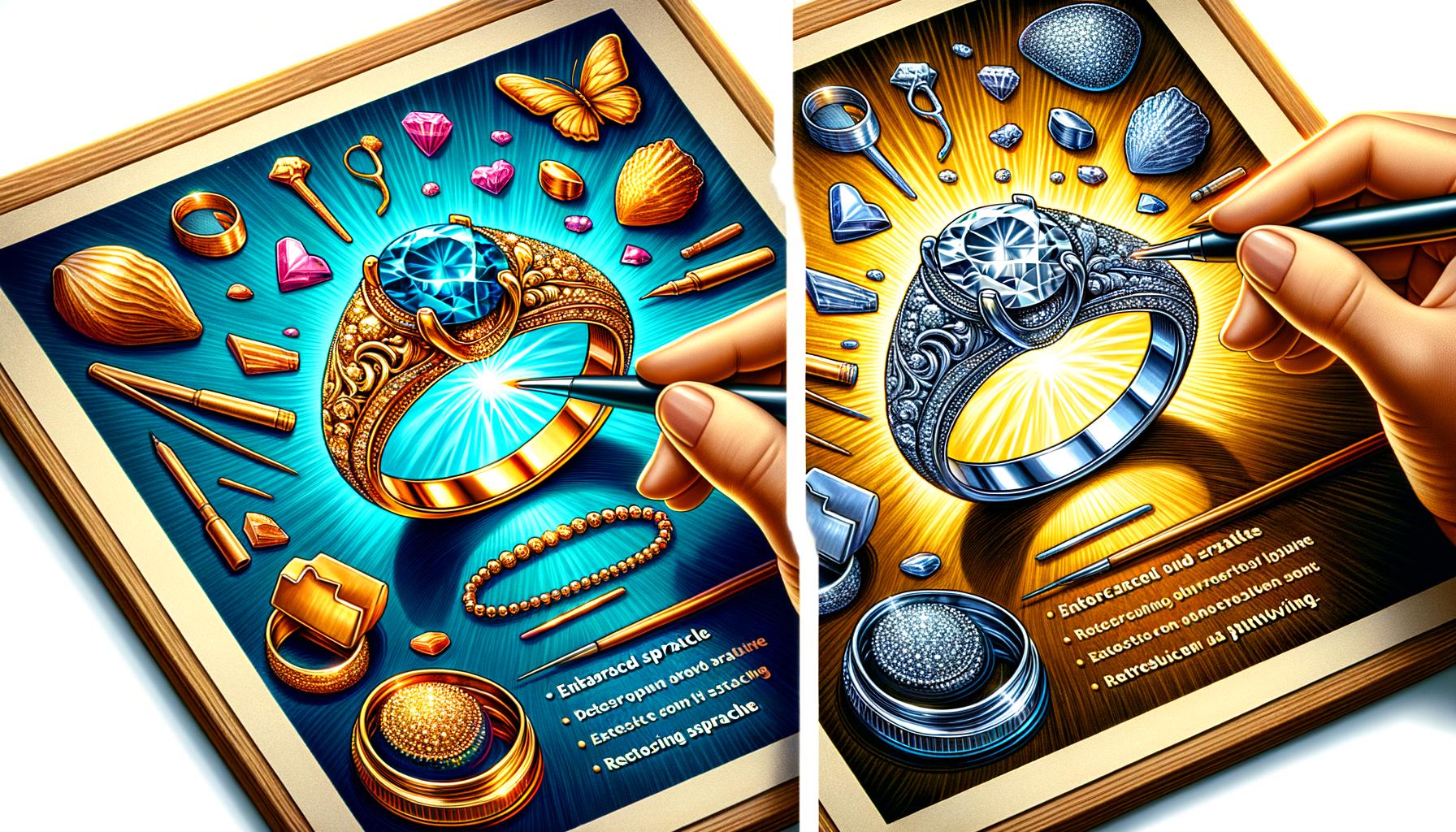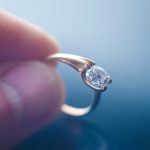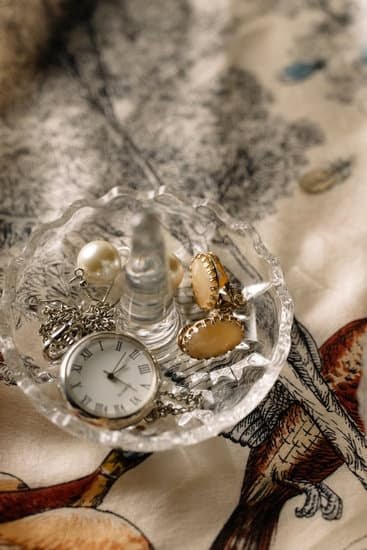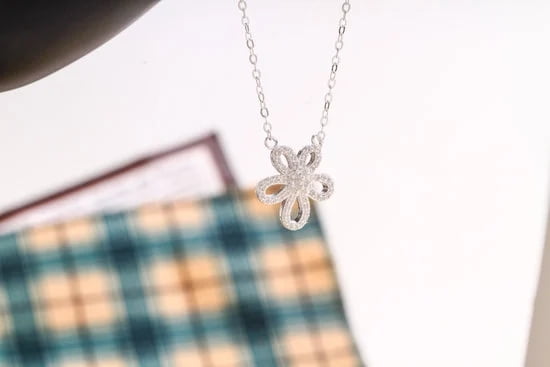Rhodium plating: why it’s used and how it affects your jewelry is a topic of great importance in the world of fine jewelry. As a finishing treatment, rhodium plating can significantly alter the appearance and durability of your treasured pieces, adding a layer of sophistication and protection that transforms them into enduring symbols of beauty. Understanding this process and its implications will help you appreciate why many jewelers prefer it and how it influences everything from aesthetics to wearability.
At its core, rhodium plating involves applying a thin layer of rhodium-a rare, silver-white metal from the platinum group-over another type of metal. This practice is particularly prevalent in pieces made from white gold and sterling silver, where it enhances both visual appeal and overall performance. Rhodium is indispensable in jewelry making due to properties like exceptional hardness, resistance to tarnish, and a highly reflective finish that imparts an impressive shine.
The benefits of rhodium plating extend beyond mere aesthetics. It not only boosts the luster and whiteness of metals but also provides a durable shield against scratches and corrosion. Rhodium’s hypoallergenic attributes further make it an ideal choice for those with sensitive skin. In exploring this versatile element’s role within the jewelry industry, we can uncover how something as seemingly simple as a metallic coating can dramatically influence our most cherished adornments.
The Science Behind Rhodium Plating
The critical process involved in applying rhodium to jewelry is called electroplating. This method employs an electric current to coat a conductive object-in this case, jewelry-with a thin layer of rhodium.
During electroplating, the jewelry piece is submerged in a specialized electrolyte solution containing dissolved rhodium ions. By using electrodes, an electrical charge causes these ions to adhere uniformly to the surface of the metal item being plated, creating a smooth, reflective finish that enhances both durability and aesthetic appeal.
Rhodium’s physical properties not only allow it to improve the visual aspects of jewelry but also offer specific functional benefits compared to other types of metal coatings such as gold or silver plating. For instance, while gold plating provides a warm hue and traditional elegance, it lacks the same level of scratch resistance that rhodium offers.
Similarly, silver plating might match the initial brightness of rhodium but tends to tarnish more quickly. Therefore, understanding “rhodium plating: why it’s used and how it affects your jewelry” can guide consumers in making more informed choices concerning their cherished possessions.
| Property | Description |
|---|---|
| Chemical Symbol | Rh |
| Color | Silver-white |
| Sourced From | South Africa, Russia, Canada |
| Main Benefit | Corrosion Resistance |
| Process Used for Jewelry Coating | Electroplating |
Why Rhodium Plating Is Used in Jewelry
Rhodium plating is frequently employed in the jewelry industry for numerous reasons. One of the primary reasons is its capacity to significantly enhance the appearance of jewelry items. Rhodium, a member of the platinum group of metals, imparts a dazzling, reflective finish that can make silver and white gold pieces appear whiter and more radiant. This added touch of brilliance helps create an immediate visual appeal, making rhodium-plated items stand out due to their exceptional shine.
Another key factor is the protective properties offered by rhodium plating. By applying a thin layer of rhodium over other metals, jewelers can effectively shield pieces from scratches, tarnish, and corrosion. This protective layer acts as a barrier against environmental factors that might otherwise degrade metals like silver or white gold. Consequently, rhodium-plated jewelry tends to maintain its luster and integrity for longer periods when compared to non-plated counterparts.
When discussing rhodium plating: why it’s used and how it affects your jewelry, it’s essential to compare it with other types of metal coatings such as gold and silver plating. Unlike gold plating, which adds a specific hue to the jewelry but may wear off more quickly under constant use, rhodium provides a brilliant white finish that sustains its appearance over time.
Additionally, while silver plating is prone to tarnish-a chemical reaction with sulfur in the air-rhodium has significant resistance to such reactions. These unique attributes explain why many jewelers prefer rhodium plating despite it sometimes being a costlier option in both initial application and maintenance requirements.
With these benefits in mind, it’s clear why rhodium plating remains a popular choice among jewelry aficionados seeking both beauty and durability for their treasured items.
Benefits of Rhodium Plating for Jewelry
Rhodium plating offers a myriad of benefits that significantly enhance both the appearance and durability of your cherished jewelry pieces. One of the primary advantages is its ability to increase the durability and scratch resistance of the jewelry. Rhodium, being one of the hardest precious metals, provides a robust protective layer that shields against everyday wear and tear. This makes rhodium-plated jewelry particularly ideal for items like rings and bracelets that are prone to constant contact with other surfaces.
Another compelling benefit is the enhanced luster and brightness that rhodium plating imparts to your jewelry. The reflective properties of rhodium give it a stunning mirror-like finish, making your jewels appear more brilliant and eye-catching.
This is especially beneficial for pieces crafted from white gold or silver, as rhodium plating can enhance their natural beauty and make them look even more dazzling. Moreover, this increased shine doesn’t fade easily, ensuring your jewelry retains its brilliance for longer periods.
Additionally, rhodium plating has hypoallergenic properties that make it suitable for individuals with sensitive skin. Many people experience allergic reactions to nickel or other metals commonly used in jewelry alloys. Rhodium’s non-reactive nature forms a barrier between your skin and any potentially irritating metal components in your jewelry. This means you can enjoy wearing beautiful pieces without concerns about skin irritation or allergic reactions.
| Benefit | Description |
|---|---|
| Durability & Scratch Resistance | Offers a robust protective layer against wear and tear. |
| Enhanced Luster & Brightness | Gives jewelry a mirror-like finish, increasing its brilliance. |
| Hypoallergenic Properties | Suitable for sensitive skin due to its non-reactive nature. |
Understanding these benefits can help you appreciate why many jewelers recommend rhodium plating: why it’s used and how it affects your jewelry‘s longevity and aesthetic appeal cannot be overstated. By choosing rhodium-plated pieces, you invest in both beautiful and durable items that stand the test of time while ensuring comfort during wear.
How Rhodium Plating Affects Your Jewelry’s Appearance
Changes in Color and Shine
Rhodium plating has a significant impact on the color and shine of your jewelry. When applied, rhodium creates a dazzling white finish that is highly reflective, enhancing the overall brightness of the piece. This brilliant white layer can make diamonds and other gemstones appear more vivid because it reflects more light into the stones.
The result is an eye-catching sparkle that makes your jewelry look incredibly luxurious. Whether it’s a necklace, bracelet, or ring, rhodium plating can transform even older, dull-looking pieces into shiny new treasures.
The Impact on Different Types of Metals
One of the remarkable things about rhodium plating: why it’s used and how it affects your jewelry consists of its ability to improve various types of metals. For instance, white gold often has a slight yellow tint due to its alloy composition. Rhodium plating neutralizes this tint by giving it a pure white appearance, making it almost indistinguishable from platinum at first glance.
Silver jewelry also benefits immensely from rhodium plating as it prevents tarnishing and keeps silver pieces lustrous for much longer compared to their non-plated counterparts. Moreover, even platinum can gain an enhanced brightness through rhodium plating despite its already naturally white hue.
Real-Life Examples and Visual Reference
For those who rely on seeing to believe, consider real-life examples demonstrating the transformative power of rhodium plating. Before-and-after photos of jewelry pieces can be particularly revealing; what starts as a slightly worn or lackluster accessory emerges as a radiant work of art after receiving a fresh coat of rhodium.
Engagement rings are common subjects for such makeovers-rhodium plating brings out the best in their intricate designs and gemstones by ensuring every facet catches light perfectly. These visual references underline just how effective and dramatic the addition of rhodium can be in making jewelry look new again, proving why it’s favored by both jewelers and customers alike.
In summary, whether you’re simply looking to revitalize an old favorite piece or wanting your newly crafted item to exude extra brilliance, understanding how rhodium plating affects your jewelry’s appearance helps you appreciate this wonderful process even more.
Maintenance and Care for Rhodium-Plated Jewelry
When it comes to maintaining and caring for your rhodium-plated jewelry, the first step is understanding the delicacy of the plating itself. Rhodium plating not only enhances the appearance of your jewelry but also provides a protective layer. To preserve this coating, regular but gentle cleaning routines are essential. Use a soft microfiber cloth to wipe down your rhodium-plated items after each wear to remove any oils or dirt that could tarnish their shine.
For a more thorough cleaning, create a mild soap solution by mixing lukewarm water with a few drops of dish soap. Dip a soft cloth into the solution and gently rub your jewelry until it sparkles again. Avoid using abrasive materials or harsh chemicals as they can damage the thin layer of rhodium. Additionally, storing your rhodium-plated pieces separately from other types of jewelry can minimize scratches and prolong their brilliance.
Over time, you may notice signs that your jewelry might need re-plating. This could include dullness, scratches, or bits of underlying metal becoming visible. Rhodium plating’s lifespan varies depending on how often you wear the piece and how well it’s cared for but typically lasts between 6 months to 2 years. Recognizing these signs and re-platting when needed will help keep your jewels looking impeccable.
In addition to routine cleaning, there are several best practices to extend the longevity of rhodium plating:
1. Avoid Exposure: Refrain from exposing rhodium-plated jewelry to perfumes, lotions, and hairsprays, as these products can deteriorate the finish.
2. Protect During Activities: Always remove your jewelry before engaging in activities that might cause abrasion or contact with chemicals-such as swimming pools due to chlorine or during heavy workouts.
3. Proper Storage: Store your pieces in individual pouches or compartments within a jewelry box to avoid scratching.
Understanding these maintenance guidelines helps ensure that rhodium plating-why it’s used and how it affects your jewelry-continues offering its visually appealing luster and protective benefits for years to come.
The Cost of Rhodium Plating
Rhodium plating can be a worthwhile investment for those looking to enhance and protect their jewelry, but it’s essential to consider the associated costs. The expenses involved in rhodium plating can vary based on several factors, including the size and type of the jewelry piece, the thickness of the rhodium layer desired, and the jeweler’s pricing policies. Generally, smaller items like rings might cost less to re-plate than larger pieces such as necklaces or bracelets.
Factors Influencing Costs
Several factors influence the price of rhodium plating. Primarily, the amount of labor required plays a significant role; complex designs that need meticulous work will naturally be pricier. Additionally, market fluctuations in the price of rhodium itself can affect costs.
As one of the rarest precious metals, rhodium prices are subject to variability based on supply and demand within global markets. Lastly, geographical location and jeweler expertise also contribute to cost disparities-luxurious brands and skilled artisans often charge more for their services.
Comparison to Other Jewelry Treatments
When comparing rhodium plating: why it’s used and how it affects your jewelry to other treatments like gold or silver plating, there are some notable differences in costs and benefits. While gold plating may offer a rich color at potentially lower prices, it does not provide the same level of brightness or durability as rhodium plating.
Silver plating is usually more affordable but lacks robust scratch resistance and tarnish prevention properties found in rhodium coating. Though initially more expensive than these alternatives, rhodium’s unmatched luster and hypoallergenic benefits often justify its higher price for many consumers seeking long-lasting beauty.
By understanding these cost dynamics associated with rhodium dipping processes, buyers can make more informed decisions about whether this high-end finish matches their financial planning while delivering enduring elegance to their treasured pieces.
Potential Downsides and Considerations
While rhodium plating offers numerous advantages, it also comes with certain downsides and considerations that potential buyers should be aware of. One of the primary factors to consider is that rhodium plating, despite its durability and allure, is not permanent. Over time, the layer of rhodium can wear off due to regular use and friction, especially in high-contact areas like ring bands.
This means that your jewelry may need periodic re-plating to maintain its original luster and protective properties. The frequency at which re-plating is needed can vary based on factors such as how often the jewelry is worn and the type of activities you’re engaging in while wearing the piece.
Another consideration is that rhodium plating isn’t suitable for all types of jewelry or gemstones. Certain designs or ornate pieces with lots of crevices might not coat evenly during the electroplating process. Additionally, some gemstones may be negatively affected by the chemicals used in the plating process, leading jewelers to avoid plating those items altogether. It’s crucial to consult with a professional who can assess whether rhodium plating is appropriate for your specific piece.
Environmental and ethical factors surrounding rhodium production also warrant attention. Mining for rhodium often involves environmentally invasive techniques that can have detrimental impacts on local ecosystems. Furthermore, mining practices in certain areas may not always adhere to ethical labor standards, raising concerns about worker conditions and fair trade practices.
Given these issues, consumers may wish to research jewelers who prioritize ethical sourcing of their materials or look into alternative coatings if they’re concerned about these impacts. Understanding these aspects thoroughly can provide a more informed perspective when deciding whether or not rhodium plating is right for you.
Rhodium Plating Alternatives
Rhodium plating is a fantastic way to protect and enhance your jewelry, but it’s not the only option available. If you’re looking for alternatives, there are several other metal coatings and finishes that might suit your needs better depending on the characteristics you’re after. Two popular options include palladium plating and platinum plating. Each offers unique advantages and can be excellent substitutes for rhodium, providing various benefits to the appearance and durability of your precious pieces.
Palladium plating is often chosen for its hypoallergenic properties, similar to rhodium plating: why it’s used and how it affects your jewelry. Palladium belongs to the same metal family as rhodium but tends to be less expensive. It provides a somewhat softer finish compared to rhodium’s brilliant shine but still adds significant protection against tarnish and wear. Many people also appreciate palladium’s resistance to discoloration over time, making it a reliable choice for everyday wear items.
Platinum plating is another alternative worth considering for high-quality jewelry items. Platinum shares many properties with rhodium, such as being highly resistant to corrosion and tarnishing while offering extreme durability. However, platinum tends to impart a more subdued but luxurious luster compared to the striking brightness of rhodium-plated pieces. Platinum plating can also add substantial weight to jewelry because platinum itself is denser than both gold and silver, offering an added sense of quality and robustness.
Ultimately, whether you choose palladium or platinum plating-each offering their distinct finishes-you gain unique advantages tailored to different types of usage and aesthetic preferences. Keeping all these alternatives in mind can help you make an informed decision about how best to treat your cherished jewelry pieces.
Conclusion
In conclusion, rhodium plating serves as an exceptional enhancement for jewelry, blending both beauty and practicality. By encapsulating your pieces in a layer of one of the most durable and visually striking metals on the periodic table, you gain not only an elevated aesthetic but also invaluable protection against wear and tear. Rhodium’s unique qualities make it particularly suited for those looking to preserve the pristine condition of their beloved jewelry collections.
When considering rhodium plating: why it’s used and how it affects your jewelry, it’s essential to weigh its benefits against other available options. From increased durability and scratch resistance to its hypoallergenic properties, rhodium is a premium option that justifies its cost through enhanced longevity and luster. While periodic re-plating may be required to maintain its brilliance, the investment often proves worthwhile for cherished items like engagement rings or family heirlooms.
Ultimately, whether you’re aiming to revitalize older pieces or add an extra layer of sophistication to new acquisitions, rhodium plating offers a versatile solution. Its bright white finish can make white gold even more dazzling or turn silver into a mirror-like marvel. As you contemplate your next jewelry purchase or refurbishment project, consider rhodium-plated options as a testament to both craftsmanship and style that stands the test of time.
Frequently Asked Questions
Is Rhodium Plating Good for Jewelry?
Rhodium plating is often considered beneficial for jewelry, especially for enhancing the durability and appearance of silver and white gold pieces. The application of a rhodium layer provides a brilliant, reflective finish that resists tarnishing and scratches, thereby maintaining the jewelry’s aesthetic appeal over time.
Additionally, this plating can enhance hypoallergenic qualities, making it suitable for individuals with sensitive skin who may experience reactions from other metals.
What Are the Side Effects of Rhodium Plating?
One notable side effect of rhodium plating is that it eventually wears off, revealing the base metal underneath. This necessitates periodic re-plating if the piece is worn frequently, which can be both inconvenient and costly.
Another potential issue is that some people might experience allergic reactions to either the rhodium or any trace elements in the underlying metal once the Rhodium starts to wear away. It’s worth noting that although hypoallergenic, no material is completely free from causing allergies.
What Is the Disadvantage of Rhodium?
The primary disadvantage of rhodium lies in its cost and maintenance requirements. As one of the rarest and most expensive precious metals, obtaining rhodium plating services can be expensive initially and over time due to required reapplications.
The labor involved in re-plating also makes it less appealing for everyday wear items compared to jewelry made from metals known for long-lasting properties without additional coatings. Consequently, while offering an attractive finish and protective qualities, rhodium’s expense and upkeep are significant considerations for prospective buyers.

Welcome to my jewelry blog! My name is Sarah and I am the owner of this blog.
I love making jewelry and sharing my creations with others.
So whether you’re someone who loves wearing jewelry yourself or simply enjoys learning about it, be sure to check out my blog for insightful posts on everything related to this exciting topic!





